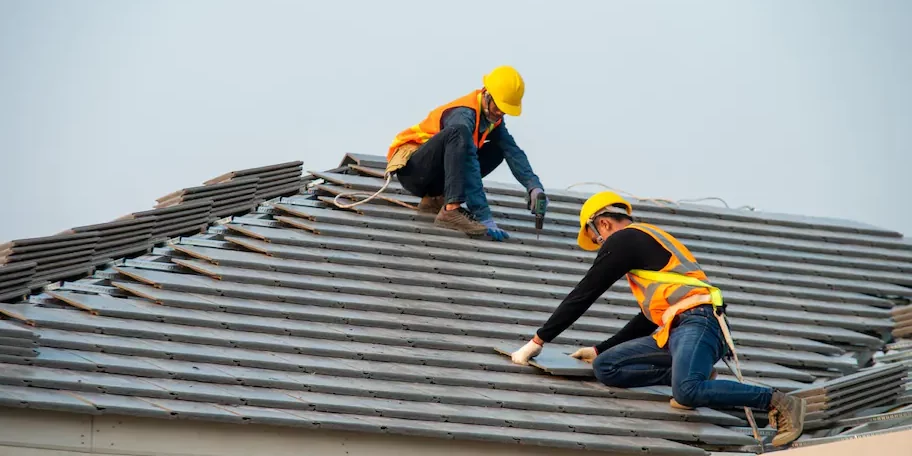Embarking on a roof replacement journey is a significant decision for any homeowner. Understanding the timeline of a roof replacement project is crucial for setting realistic expectations. From the initial inspection to the final quality assurance steps, the process involves several stages that impact the overall duration. In this comprehensive guide, we will delve into the intricacies of roof replace, exploring the factors influencing the timeline and providing valuable insights for homeowners considering this crucial home improvement.
How long does it take to replace a roof?
The duration of a roof replacement project can vary based on several factors, including the size and complexity of the roof, weather conditions, and the efficiency of the roofing crew. On average, a straightforward roof replacement for a standard-sized home may take anywhere from a few days to a week. However, larger or more intricate projects could extend the timeline. It’s crucial to consult with a roofing professional who can assess your specific situation and provide a more accurate estimate based on your unique requirements. Additionally, factors like obtaining permits, choosing roofing materials, and unforeseen issues can influence the overall duration of the project.
Roof Inspection and Assessment
Before diving into the replacement process, a thorough roof inspection is essential. Roof replacement decisions hinge on the outcomes of this assessment, as it sets the stage for the entire project.
The Significance of a Thorough Roof Inspection
A comprehensive roof inspection identifies existing issues, potential concerns, and the overall condition of the roofing structure. This step is crucial for determining the scope of the replacement project.
Identifying Damage and Areas Requiring Replacement
Inspectors meticulously assess shingles, flashing, and the underlying structure to identify damaged areas that necessitate replacement. This detailed assessment is the foundation upon which the replacement plan is built.
How the Initial Assessment Impacts the Timeline
Efficient and thorough inspections streamline the decision-making process, expediting the project timeline. A well-informed assessment enables roofing professionals to plan strategically and address issues promptly.
Choosing Roofing Materials
Selecting the right roofing materials is a pivotal decision that significantly influences the timeline of a roof replacement project.
Exploring Different Roofing Materials and Their Features
Homeowners can choose from an array of roofing materials, each with its unique features. The decision may involve considerations of durability, aesthetics, and regional climate.
Decision-Making Factors in Material Selection
Factors such as budget, architectural style, and personal preferences play a crucial role in material selection. Aligning these factors ensures that the chosen materials meet the homeowner’s expectations.
The Influence of Chosen Materials on the Overall Project Duration
Certain roofing materials require more intricate installation processes, affecting the overall project timeline. Understanding the implications of material choices helps in planning accordingly.
Obtaining Permits and Planning
Navigating the bureaucratic landscape of obtaining permits and meticulous planning are integral components of a successful roof replacement project.
Navigating the Permit Acquisition Process
Securing necessary permits is a prerequisite for commencing a roof replacement project. The duration of this process varies based on local regulations, making early permit acquisition essential.
The Importance of Meticulous Planning Before the Project Begins
Detailed project planning involves coordinating material delivery, crew scheduling, and waste disposal logistics. Thorough planning sets the stage for a smooth and timely project execution.
How Proper Planning Can Streamline the Replacement Timeline
Efficient planning minimizes downtime, prevents unnecessary delays, and ensures that the project progresses seamlessly. A well-organized plan is a blueprint for success in any roof replacement endeavor.
Removal of Old Roofing Materials
The removal of old roofing materials marks the commencement of the physical work involved in a roof replacement project.
The Process of Removing Old Shingles or Roofing Material
Skilled roofing crews employ specialized tools to remove old shingles or roofing material systematically. The efficiency of this phase impacts the overall pace of the project.
Considerations for Eco-Friendly Disposal
In an era of increased environmental consciousness, responsible disposal of old roofing materials is a priority. Many contractors offer eco-friendly disposal options, contributing to sustainable practices.
How the Complexity of Removal Affects the Project Timeline
Factors such as the number of layers to be removed and the condition of the existing structure can influence the complexity of the removal process. A more intricate removal may extend the overall timeline.
Roofing Installation Process
With the old roofing material removed, the roofing installation process takes center stage, requiring precision and expertise.
Overview of the Steps Involved in Installing a New Roof
Roofing installation involves a sequence of steps, including laying down underlayment, applying flashing, and strategically placing new shingles. Each step contributes to the overall integrity of the new roof.
The Role of the Roofing Crew and Their Efficiency
The expertise and efficiency of the roofing crew are paramount during installation. Well-coordinated teams can navigate challenges swiftly, ensuring the project stays on schedule.
Quality Control Measures During Installation
Ensuring the quality of workmanship during installation prevents future issues. Regular inspections and adherence to industry standards contribute to a roof replacement project’s success.
Unforeseen Issues and Delays
Despite meticulous planning, unforeseen issues may arise during a roof replacement project, necessitating adaptive problem-solving.
Addressing Unexpected Challenges That May Arise
Issues such as unexpected structural damage or weather-related setbacks may occur. Prompt identification and resolution are crucial for minimizing delays.
Strategies for Handling Unforeseen Issues Without Compromising Quality
Experienced roofing professionals implement strategic solutions to unforeseen challenges without compromising the overall quality of the replacement. Adaptive problem-solving ensures a successful project outcome.
How Proactive Problem-Solving Impacts the Overall Timeline
A proactive approach to addressing challenges minimizes downtime, preventing unforeseen issues from significantly impacting the project timeline.
Weather Considerations
Weather conditions play a substantial role in determining the pace of a roof replacement project, requiring strategic scheduling.
The Impact of Weather Conditions on Roof Replacement
Adverse weather conditions, such as rain or extreme temperatures, can impact the safety and efficiency of the installation process. Weather considerations are vital for planning.
Strategies for Scheduling Around Adverse Weather
Experienced contractors incorporate weather forecasts into their scheduling, ensuring that work is scheduled during favorable conditions. This proactive approach minimizes weather-related delays.
How Delays Due to Weather Are Factored Into the Timeline
In instances where weather conditions cause delays, contractors communicate transparently with homeowners and adjust the timeline accordingly. Flexibility is key in navigating weather-related setbacks.
Final Inspections and Quality Assurance
As the physical work concludes, final inspections and quality assurance steps are integral to ensuring a successful roof replacement.
Importance of Final Inspections Before Project Completion
Thorough inspections assess the integrity of the newly installed roof, identifying any potential issues that require attention before project completion.
Addressing Any Outstanding Issues or Concerns
If issues are identified during inspections, prompt resolution ensures that the homeowner receives a fully functional and problem-free roof.
The Role of Quality Assurance in Ensuring a Successful Roof Replacement
A robust quality assurance process involves verifying that every aspect of the roof replacement meets industry standards. This final step ensures homeowner satisfaction and the longevity of the new roof.
Post-Installation Considerations
Even after the completion of the roof replacement project, homeowners need to consider post-installation care and maintenance.
Guidance on Post-Installation Care and Maintenance
Providing homeowners with guidance on caring for their new roof enhances its longevity. Simple maintenance practices contribute to the overall durability of the roofing structure.
Warranty Information and Considerations
Understanding the warranty details of the new roof is crucial for homeowners. Contractors often provide warranty information that outlines coverage and duration.
Ensuring Customer Satisfaction and Addressing Any Lingering Concerns
Effective communication between contractors and homeowners ensures satisfaction. Addressing any post-installation concerns promptly solidifies the positive experience for the homeowner.
Conclusion
In conclusion, the timeline of a roof replace project involves a series of carefully orchestrated steps, from the initial inspection to post-installation considerations. Homeowners investing in roof replacement should have a clear understanding of the process and the factors that may influence its duration. With thorough planning, proactive problem-solving, and quality workmanship, a roof replacement project can proceed smoothly, providing homeowners with a durable and aesthetically-pleasing roofing structure. By navigating each phase with care and attention to detail, homeowners can embark on the journey of roof replacement confidently, knowing that they are making a sound investment in the protection and enhancement of their homes.







